Resources
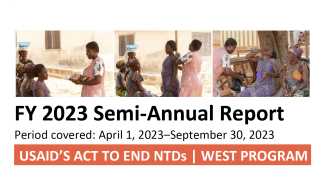
Act | West FY 23 Semi-Annual Report: April 2023 - September 2023
This report outlines the key achievements and challenges in the last six months of the fifth year of program implementation, spanning the period April 2023 - September 2023.
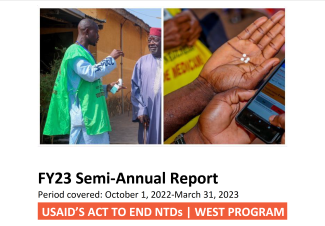
Act | West FY 23 Semi-Annual Report: October 2022 - March 2023
This report outlines the key achievements and challenges in the first six months of the fifth year of program implementation, spanning the period October 2022 - March 2023.
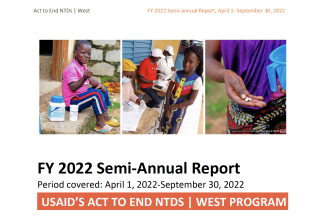
Act | West FY 22 Semi-Annual Report: April 2022 - September 2022
This report outlines the key achievements and challenges in the last six months of the fourth year of program implementation, spanning the period April 1, 2022 - September 31, 2022.
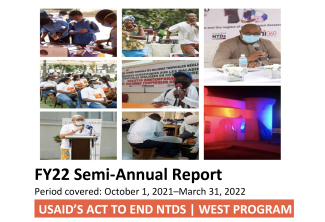
Act | West FY 22 Semi Annual Report: October 2021 - March 2022
This report outlines the key achievements and challenges in the first six months of the fourth year of program implementation, spanning the period October 1, 2021–March 31, 2022.
Act | West FY 21 Semi Annual Report: April 2021 - September 2021
This report outlines the key achievements and challenges in the last six months of the third year of program implementation, spanning the period April 1, 2021–September 30, 2021.
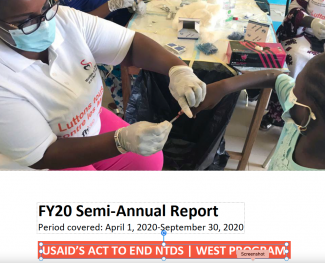
FY20 Semi-Annual Report: April 2020—September 2020
The United States Agency for International Development (USAID) granted funding to FHI 360 for the implementation of Act to End Neglected Tropical Disease West (Act | West) program from July 19, 2018–July 18, 2023. The program is part of the global effort to eliminate neglected tropical diseases (NTDs). It particularly aims to eliminate lymphatic filariasis (LF), trachoma, and onchocerciasis (OV) (in certain countries) and control schistosomiasis (SCH) and soil-transmitted helminthiasis (STH) in 11 endemic West African countries—including Burkina Faso, Benin, Cameroon, Guinea, Ghana, Côte D’Ivoire, Mali, Niger, Senegal, Sierra Leone, and Togo. It also supports achievement of sustainable service delivery, with growing ownership of national governments in the elimination and/or control of NTDs. This report outlines the key achievements and challenges in the first six months of the second year of program implementation, spanning the period April 1, 2020–September 30, 2020.
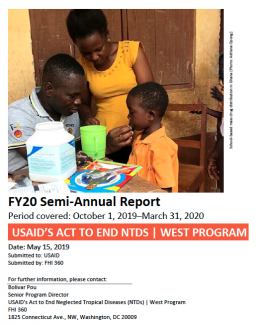
FY20 Semi-Annual Report: October 2019—March 2020
This report outlines the key achievements and challenges in the first six months of the second year of implementation of USAID's Act to End NTDs | West Program, spanning the period October 1, 2019–March 31, 2020.

Applying a quality improvement model to neglected tropical diseases program implementation: supporting programs in identifying keys for sustaining operations
West African neglected tropical diseases (NTD) programs have made great progress toward the elimination/control of NTDs amenable to preventive chemotherapy. However, some districts have failed impact surveys—notably for lymphatic filariasis and trachoma—due to implementation inadequacies, despite reporting good mass treatment coverage. A quality improvement framework has been initiated to strengthen country program interventions and address issues that hinder their ability to achieve the World Health Organization NTD road map elimination/control goals.
The workshop aims to present an innovative model for improving implementation and discuss ideas, strategies, and plans for initiating quality improvement (QI) activities. Experiences from Ghana and Sierra Leone in the design and implementation of the QI model will be shared.
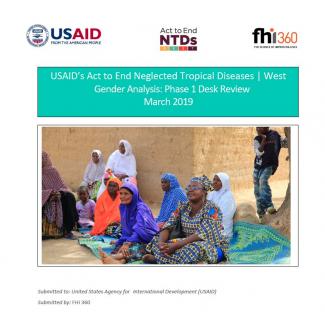
Gender Analysis: Phase 1 Desk Review
The USAID Act to End NTDs | West program's two-phase gender analysis examines the differential impact of NTDs by gender, including how gender norms and power differentials may impact NTD program results and how the program can help advance gender equality. Phase one of the gender analysis consists of a literature review, drawing on published and grey literature, as well as an initial analysis of available quantitative data.